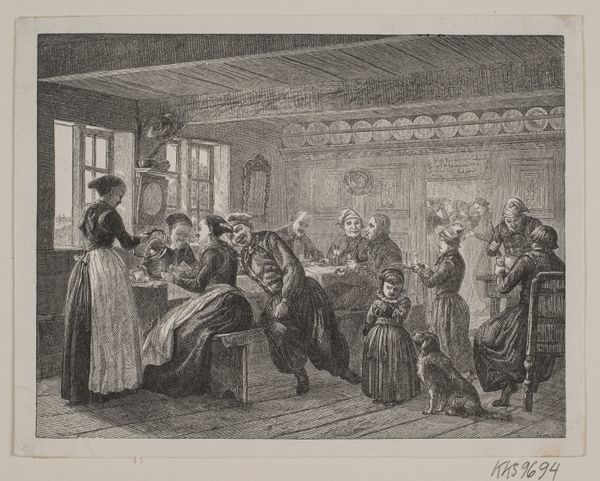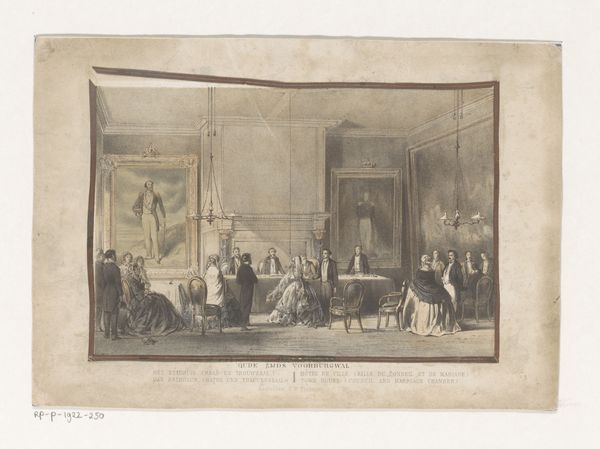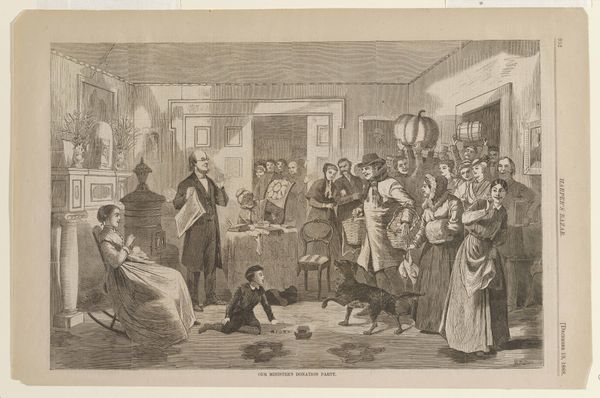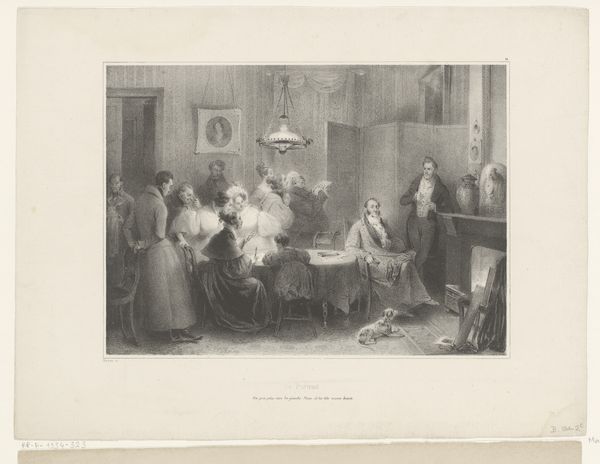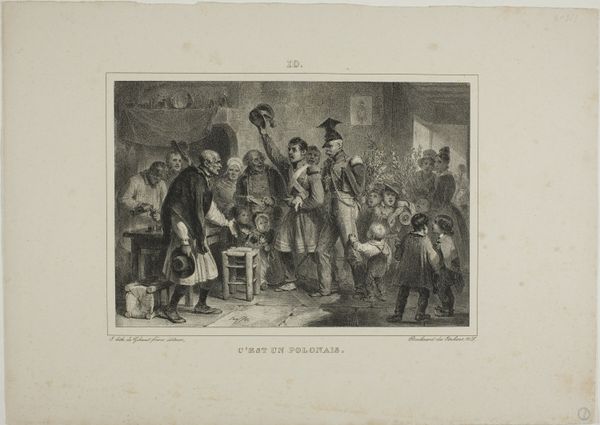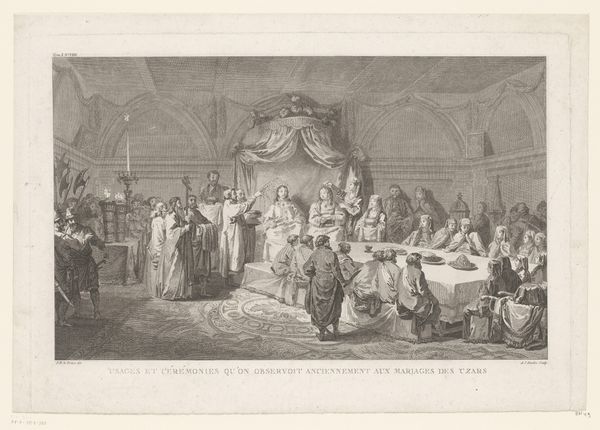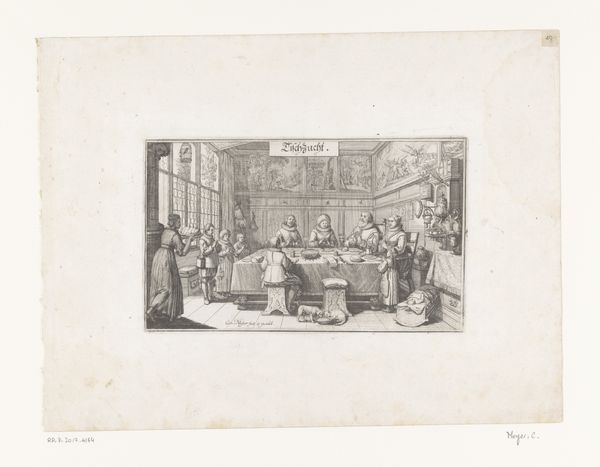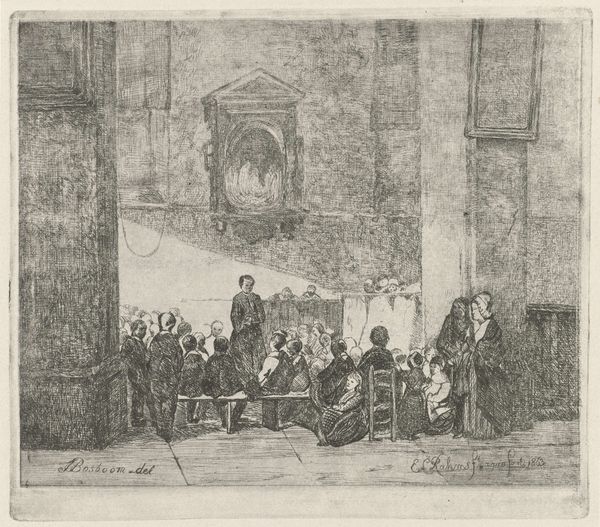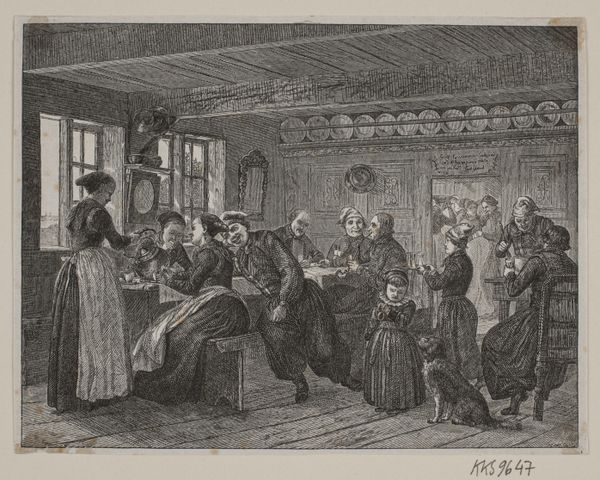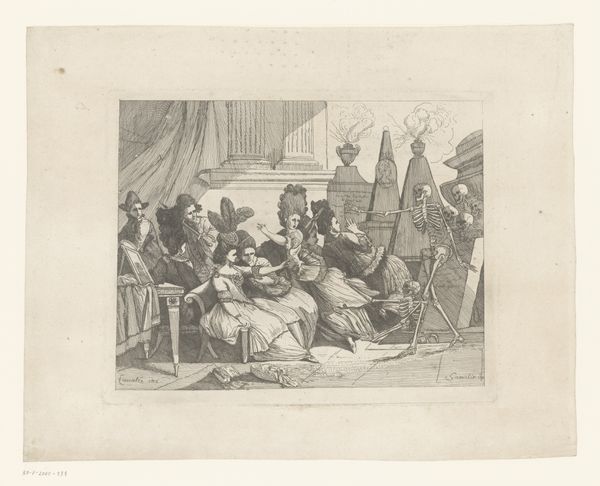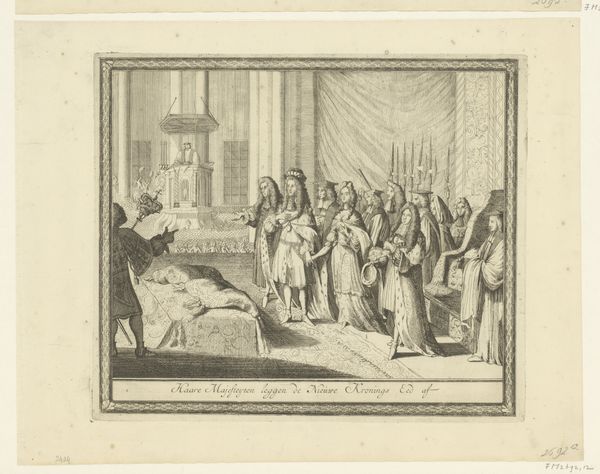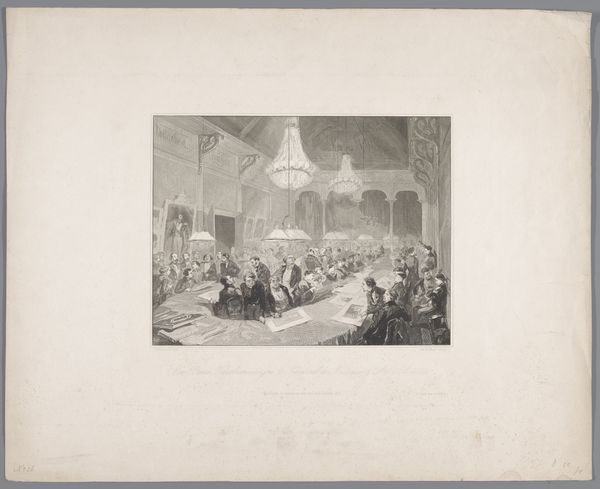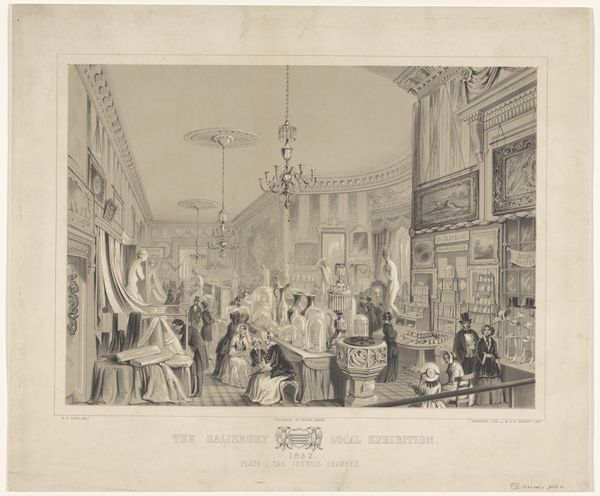
print, engraving
# print
#
old engraving style
#
figuration
#
19th century
#
watercolour illustration
#
genre-painting
#
engraving
Dimensions: height 168 mm, width 257 mm
Copyright: Rijks Museum: Open Domain
Curator: This engraving from 1856 by Célestin Nanteuil is titled "Gezelschap in de grote salon," or "Company in the grand salon." What's your first impression? Editor: Stuffy! It feels like a depiction of leisure that few could actually afford. Just look at the ornate decor and the sheer number of people idling about. Curator: Certainly, the artist highlights the privileges afforded by that era. Think about what the objects themselves meant—chandeliers, ornate wallpaper, even leisure time becomes symbolic. Editor: Absolutely, and let's not overlook the composition. The rigid social structure seems mirrored in the arrangement of figures—men grouped together, women often paired, distinct social activities...It reinforces the societal norms of the time. Curator: Exactly. These are all consciously constructed and layered with the cultural weight of the 19th century. Each posture, each outfit, each object tells a story about the values they held. Editor: Which values were overwhelmingly dictated by gender and class. Look at those two children huddled near the window...their isolation underscores how children of certain classes were merely background props. The social performance trumps individual childhood experiences. Curator: The rendering in print allows a wider audience to witness these societal behaviors, and thus it provides not just an observation of elite habits but potentially a standardization. Are you suggesting there is almost a prescriptive element? Editor: Perhaps, at least it immortalizes and, to an extent, legitimizes a certain hierarchical way of being. It speaks volumes about the dynamics between labor and leisure, and how visibly displaying affluence was practically an occupation. Curator: And it's through deciphering those coded sartorial signs and symbols—unpicking the very threads of those lives that this image offers so much social insight. The chess players for example become symbolic of social stratagem. Editor: Which reminds us how images can both reflect and actively shape our perceptions of history and society. Curator: Precisely, visual works can act as anchors for social values. Editor: In fact, analyzing art like this allows us to expose the ideologies beneath so much seemingly 'innocent' representation of reality.
Comments
No comments
Be the first to comment and join the conversation on the ultimate creative platform.
